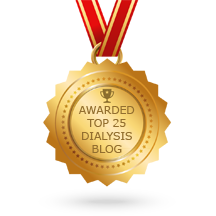Ok. Aseptic technique. What is that? "Aseptic technique is a method designed to prevent contamination from microorganisms. It involves applying the strictest rules and utilizing what is known about infection prevention to minimize the risks that you’ll experience an infection. Common settings where the aseptic technique is used include surgery rooms, clinics, and outpatient care centers. ". I use the aseptic technique before every treatment. Always ALWAYS. I was taught this during my home hemodialysis training. My technique includes actions and tools. Aseptic technique is used to prevent infection. Because I am inserting foreign objects into my body, I need to make sure everything about the process is clean. The last thing I want is an infection...like an infection in my blood that's bad. Very bad.
My tools are antibacterial soap, Exsept solution ( Skin and Wound Cleanser for epidermal and dermal wounds. A safe non-sensitizing, non-allergenic wound cleanser. It is non-irritating, non-sensitizing and safe for use on skin and wounds), alcohol prep pads, betadine prep pads (This product contains antibiotics that work by slowing or stopping the growth of bacteria.... I had to move to this because my skin was reacting to the other antibacterial pads), hospital grade examination gloves, and a surgical face mask.
I start out by washing my hands for 30 seconds with the antibacterial soap. I then rinse my arm with hot water where the accesses are for 30 seconds. Then I lather the access sites for 90 seconds. I let the soap stay on the sites for 30 seconds, then I rinse off the access sites. Yes, I do this every time. After I finish this, I prepare my workstation. This includes attaching a sterile pad on my equipment cart, with plastic tape, setting out my needles and syringes. Yes, there is a difference! The needles are inserted in my arm, the syringes hold the meds that are administered, or they get filled with saline solution. I lay out 8 pieces of tape .. Brian will use the tape to keep the needles in my arm in place. And as with everything, there is a precise way to place the tape. Of course. I digress.. Other items are the betadine, gauze pads for the Exsept and the taping process. And finally the heparin, a blood thinner, every treatment, to minimize clots and epogen, 3 days a week, specific to dialysis patients for anemia (do you smell the financial racket...another topic for another day). Whew that's a lot.
Anyway. After I set up the station, I drench 2 gauze pads with Exsept, place them on my 2 access site and soak the area for 5 minutes. During this time I put on the gloves and the mask. After the 5 minutes I swab both access sites with the betadine. I then use the pick tool to remove the scabs from the access site...we don't want scabs inserted into the access site and into the blood. After the scabs are removed, I wipe the site again, with betadine. And now, finally. I can insert the needles ( stick myself, cannulate..whichever term you prefer). Yep. The prep time for me and Brian...he has an entire different set of procedures and tasks, takes us about 30 minutes. And remember this is just what I'm doing to prevent infection...aseptic technique.
And now I have the audacity to give you a dialysis update! Monday, after we'd finish..Brian bandaged me up, I was sitting in the chair doing, I don't know what, and I felt the telltale warm feeling on my arm. I looked down and blood was coming out of one of my access sites. Sometimes that happens. Not often, though. It was a little messy, but basically it was just my arm that got bloody and not much. We caught it in time. Pressure was applied, we removed the bandages and found out it was the venous access, the top one. Cleaned the area, reapplied the antibacterial ointment and bandages and it was over.
Well, that's it for today. Maybe rain or thunderstorms today? That's cool. Makes the prickly pear cacti bloom! Enjoy your day!!





No comments:
Post a Comment